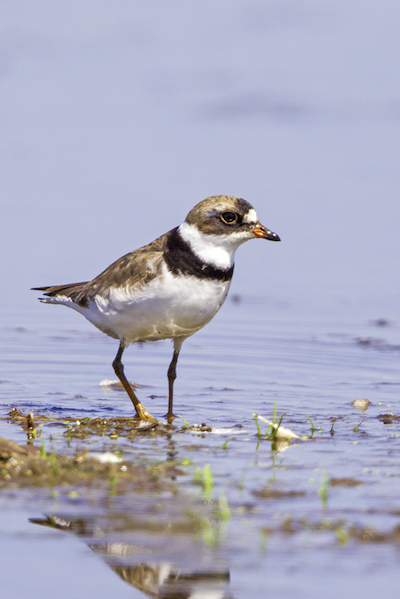The Flyway Migration Relies on Water
By Luke Matthews
Roughly 10 million migratory waterbirds arrive in the fall and spend their winters in the Sacramento Valley. Although the bulk of those birds have not reached our region yet, there are some species that have started to show up. The migratory birds that travel down the Pacific Flyway generally fall into two sperate groups: those that spend the fall and winter here and those that only stay for a short while to rest and refuel before they continue their migration south into Mexico, Central and South America.

The species that we have already started to see include Semipalmated Plovers, Greater Yellowlegs, Long-billed Dowitcher, Green-winged Teal and Northern Pintail. Some of these birds are arriving earlier than expected. The changes in migratory patterns is largely attributed to the drought conditions across the Western US. As waterbirds migrate south along the Pacific Flyway they typically stop in a few key staging areas to rest and refuel; however, with serious drought conditions across the West some of these areas are dry. Klamath National Wildlife Refuge and the Great Salt Lake are two examples of key staging areas that are also experiencing history drought condition. As birds reach these key staging areas and find little to no water, they are forced to continue south and as a result are showing up in the Sacramento Valley earlier than normal.
Unfortunately, drought conditions are not much better in the Sacramento Valley. The Wildlife Refuges are doing their best to provide early water for the migrants that are showing up but many of them have limited water supplies for this fall and winter. Additionally, the California Ricelands Waterbird Foundation is working with rice farmers to flood idle rice fields with shallow water to create critical shorebird habitat through their Bid4Birds Program.
Conservationists and farmers are doing the best they can to provide habitat for waterbirds this fall and winter but unless our situation changes there will be a deficit of habitat for our migratory waterbirds this year.
Luke Matthews is the Wildlife Programs Manager for the California Rice Commission






